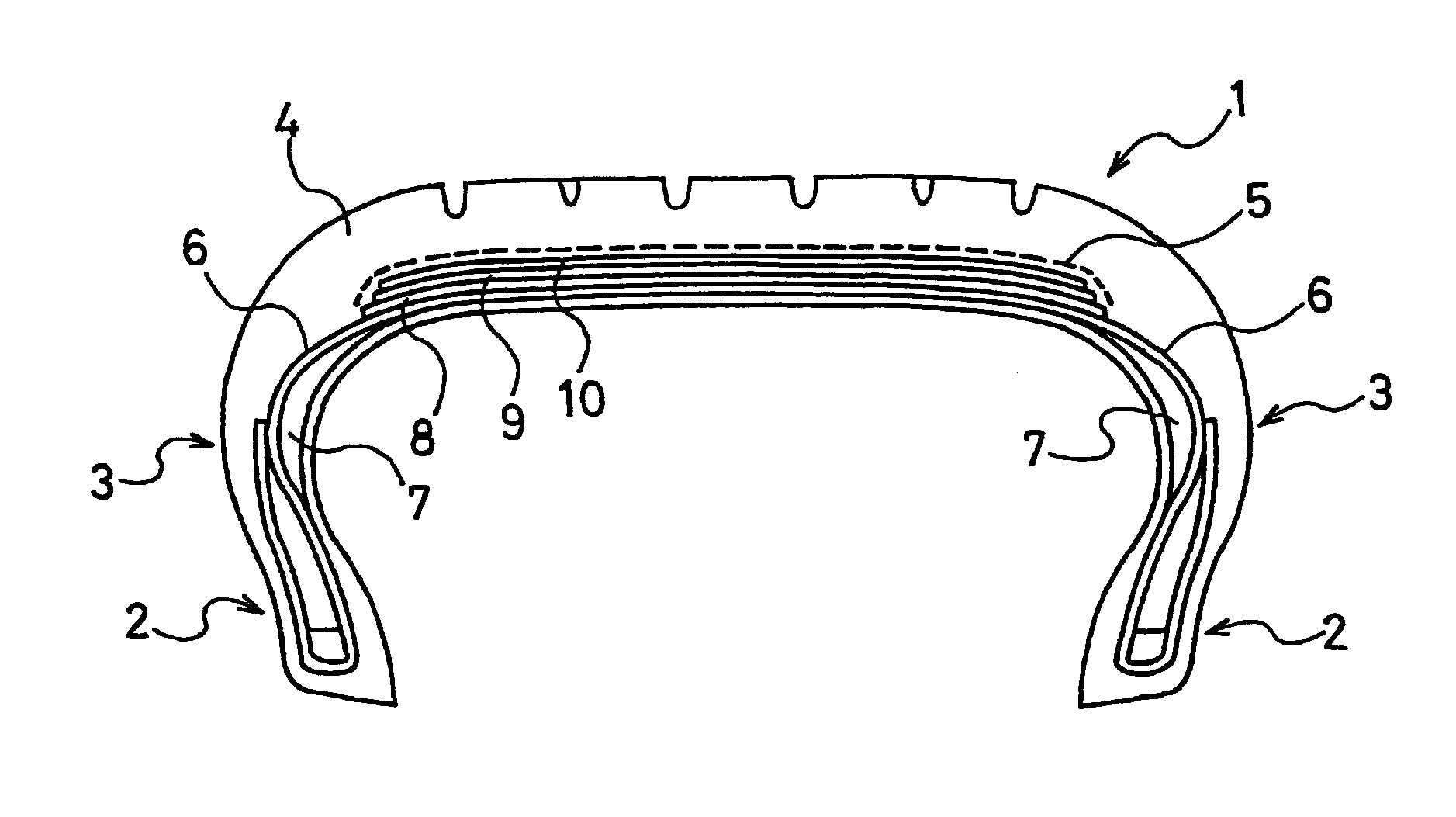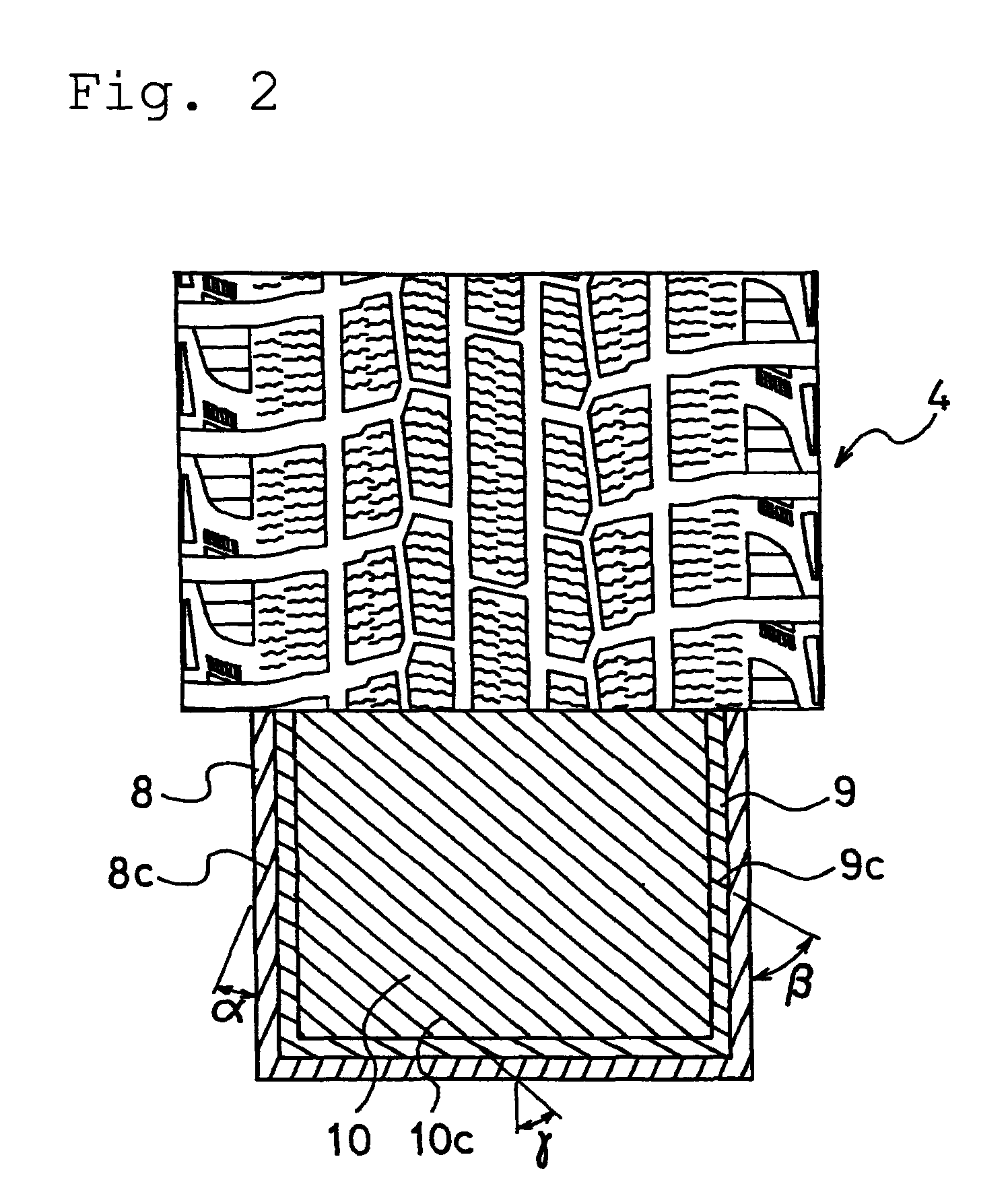Run flat tire
a technology of running flat tire and tire, which is applied in the direction of wheels, vehicle components, transportation and packaging, etc., can solve the problems of tire slipping on icy road surfaces, tire deterioration, tire wear and tear, etc., and achieves the effect of increasing the compression stiffness, increasing the out-of-plane stiffness, and driving stability in running
- Summary
- Abstract
- Description
- Claims
- Application Information
AI Technical Summary
Benefits of technology
Problems solved by technology
Method used
Image
Examples
examples 8 and 9
[0062]Examples 8 and 9 were prepared by varying, as shown in Table 2, the total cross-sectional area of the cords included in one of the outermost belt layer and the intermediate belt layer of the tire of Example 1. It should be noted that the total cross-sectional areas of the cords per unit width are shown by indices where the total cross-sectional area of the cords per unit area in the above-described conventional tire (Conventional Example) is taken as 100.
[0063]These two types of tires were evaluated, by the same testing methods as described above, in terms of the ride comfort in running on general road surfaces and the driving stability in running on snowy road surfaces at the time when the tire is not punctured, as well as the starting performance on icy road surfaces in run-flat running. The results of the evaluation are shown in Table 2, along with the result of the conventional tire (Conventional Example) shown in Table 1.
[0064]
TABLE 2ConventionalExampleExampleExample89Inn...
PUM
 Login to View More
Login to View More Abstract
Description
Claims
Application Information
 Login to View More
Login to View More - R&D
- Intellectual Property
- Life Sciences
- Materials
- Tech Scout
- Unparalleled Data Quality
- Higher Quality Content
- 60% Fewer Hallucinations
Browse by: Latest US Patents, China's latest patents, Technical Efficacy Thesaurus, Application Domain, Technology Topic, Popular Technical Reports.
© 2025 PatSnap. All rights reserved.Legal|Privacy policy|Modern Slavery Act Transparency Statement|Sitemap|About US| Contact US: help@patsnap.com



